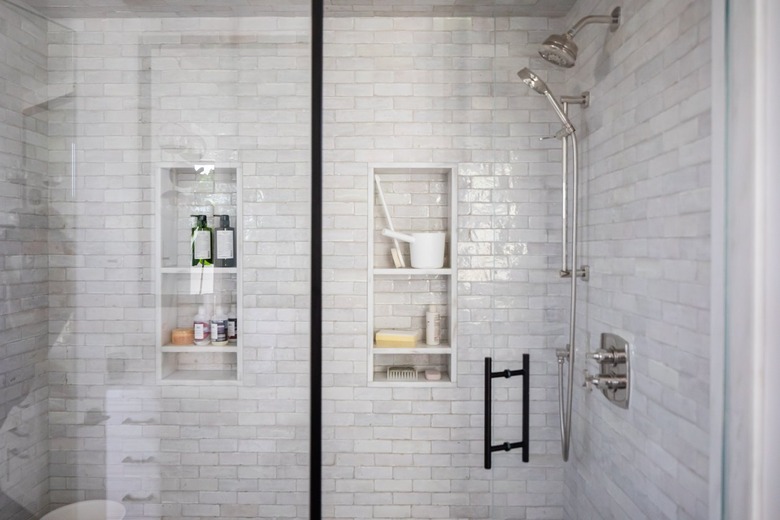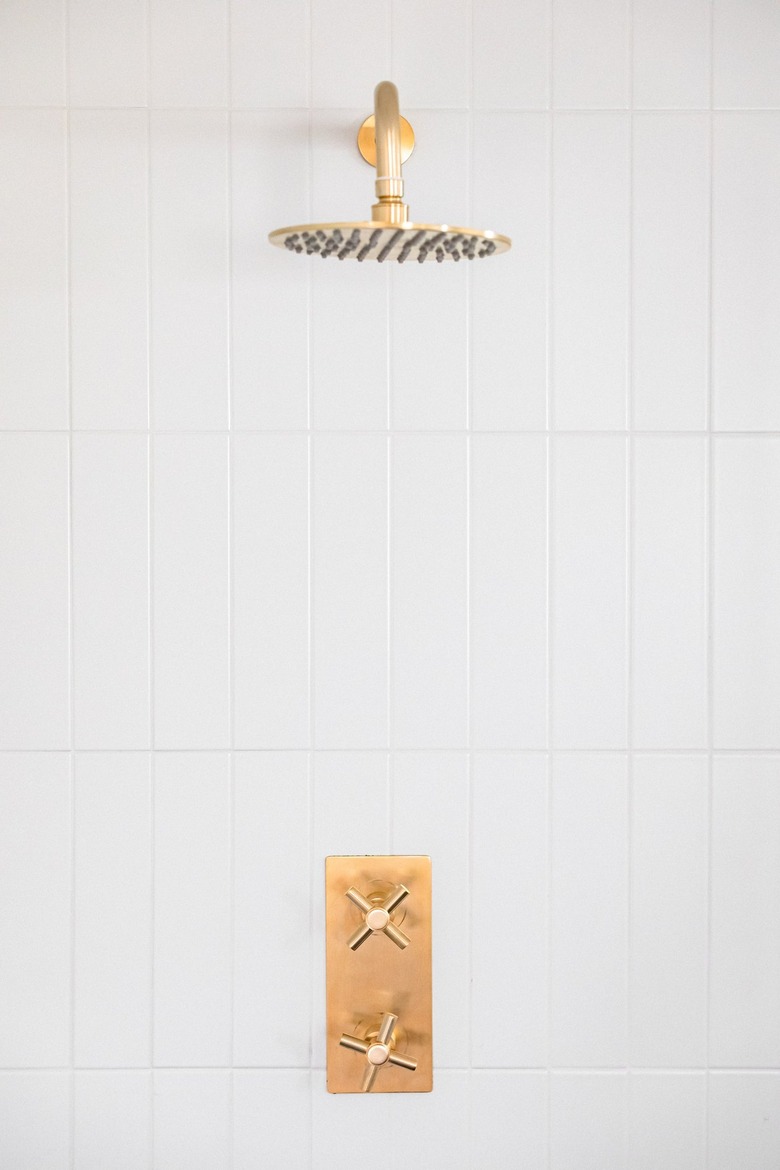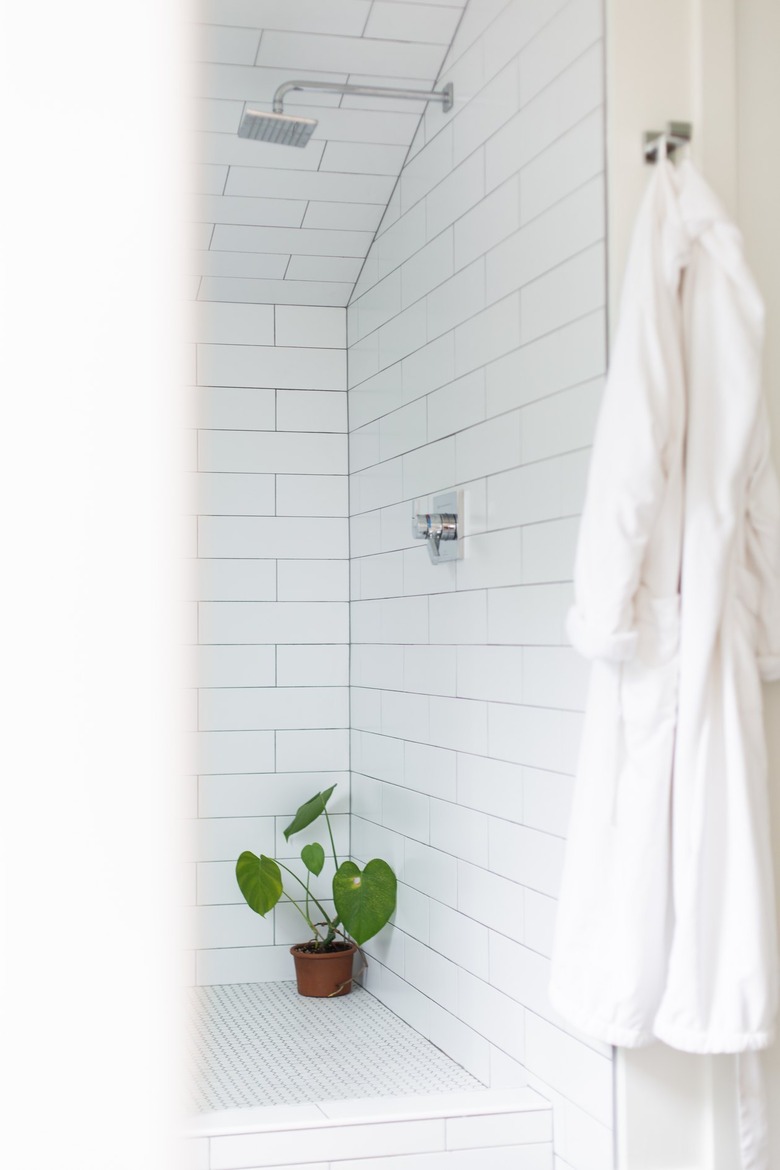Shower Valve Types: A DIY Homeowner's Guide
We may receive a commission on purchases made from links.
Before Al Moen invented the first single-handle mixing valve faucet in the late 1930s, the typical shower valve type had two handles, and you regulated the temperature of the water by manually adjusting the hot and cold mixture yourself. The motivation for Moen's invention, according to the Moen website, was a scalding accident that occurred when he turned the hot water valve too far. He was using a sink faucet at the time, but if he had been taking a shower, he could have been seriously injured like many people have been through the years.
There are three main shower valve types in contemporary plumbing, and most have only one handle. To prevent scalding accidents of the type that happened to Moen, most states have regulations that place a limit on the maximum temperature that a showerhead can emit, and temperature regulation is easier with a single-handle valve. Double-handle, scald-proof faucets do exist, though, so you can still equip your clawfoot tub-and-shower unit with a designer double-handle, pressure-balancing faucet that satisfies code.
Shower Valves, Faucets and Diverter Valves
Shower Valves, Faucets and Diverter Valves
People tend to use the terms "shower valve" and "shower faucet" interchangeably, but they don't mean the same thing. The parts that you see inside the shower, including the handles, showerhead and bathtub spout, comprise the faucet, or "trim kit," and in these parts, style and function play equal roles. The plumbing fitting that does all the work, however, is the valve, and it's hidden behind the wall where you can't see it.
You'll come across three types of shower valves for single-handle faucets. The least sophisticated is the standard mixing valve, which is the earliest type of single-handle shower valve and one that isn't as common as it once was. It has two modern counterparts, the pressure-balancing valve and the thermostatic shower valve, both of which are designed to satisfy code and provide a more comfortable, scald-free shower.
A third type of shower valve is the diverter valve, which routes water away from the bathtub spout and toward the shower head and vice versa. The most common is a tee diverter, which is a handle on the tub spout that you pull up when you want to take a shower. The diverter may also be incorporated into the shower valve and controlled by a separate handle, as is common with older two-handle shower valves.
The Standard Mixing Shower Valve
The Standard Mixing Shower Valve
A standard mixing shower valve is a cylindrical plumbing fitting about the size of a softball that sits inside the shower wall directly behind the shower handle. It's usually made of brass, and it has hot and cold water inlets, an outlet on top for a pipe that leads to the shower head and sometimes an outlet on the bottom for a tub spout. The inlets and outlets may be smooth for soldering copper pipe or threaded for screwing on adapters for PEX tubing or CPVC pipe.
Inside the valve housing is a cartridge with strategically placed holes that control the flow of water from the hot and cold sides when you turn the shower handle, which is connected to it. The configuration of the holes gives you more or less control over the water temperature depending on the sophistication of the cartridge, and cartridge designs vary from manufacturer to manufacturer. Delta and some other manufacturers equip their shower faucets with ball valves instead of cartridges, and they work in the same way.
Standard mixing valves often feature a temperature limiter, which is an adjustable stop ring attached to the handle that prevents you from turning the handle too far in the hot direction. This feature is known as a scald guard, but it can't protect you from sudden changes in water temperature that occur when someone reduces water pressure by flushing a toilet or turning on the washing machine while you're showering. This is why standard mixing valves now incorporate features that make them true anti-scald valves.
The Pressure-Balancing Valve and the Thermostatic Valve
The Pressure-Balancing Valve and the Thermostatic Valve
Like a standard mixing valve, a pressure-balancing valve has only one handle that controls both temperature and water flow. It looks the same as a mixing valve, but inside, it has pressure-sensitive pistons or diaphragms that respond to changing water pressure to maintain the same ratio of hot and cold water. If you're showering and someone reduces the cold water pressure by flushing a toilet, the valve responds by simultaneously reducing the hot water pressure to keep the shower water to within a few degrees of the same temperature.
A thermostatic shower valve has two handles that rotate around the same shaft, one handle to control water flow and one to control temperature. It has a wax element inside it that responds to water temperature, expanding when the temperature rises to admit less hot water and contracting when the temperature falls to admit more so it can keep the water temperature constant regardless of the flow rate. You typically set the temperature handle to the most comfortable setting, leave it there and then use the other handle to turn the shower on and off and control the flow rate.
Of all shower valve types, a thermostatic valve is the most expensive, and you don't always need one, but it's a good choice in a household with children, elderly people and others who might have a difficult time finding the right temperature. It's still possible to get scalded by a pressure-balancing valve if you set the temperature too high, and PlumbingSupply.com advises that you shouldn't try to avoid this by lowering the temperature setting on your water heater. The ideal temperature for killing microbes in the water heater is 140 degrees Fahrenheit or above, which is 20 degrees higher than the maximum shower temperature allowed in many states, so the most reliable way to avoid scalding accidents is to install a thermostatic valve.
Tips for DIY Shower Valve Installation
Tips for DIY Shower Valve Installation
Installing a shower valve is one of the more challenging DIY jobs because if you have copper pipes, it involves soldering. Imperfectly soldered joints can leak almost imperceptibly, and once the wall is finished and the valve is covered over, a small leak can cause extensive damage to the wall and floor framing over time. You don't have to be concerned about this if you have confidence in your soldering skills, but if you're looking for an easier way out, CPVC pipe and especially PEX tubing were made for you.
To use either of these alternative water supply piping systems, you need a shower valve with threaded ports. If you're using CPVC, the valve has male threads, so you can screw on adapters with female threads as required by code for plastic-to-brass adapters. If you're using PEX, the valve has female ports because PEX adapters are brass. After installing the adapters and mounting the valve on blocking in the shower wall according to the manufacturer's instructions, you're ready to connect the piping for the shower system.
Another option is to use push-in (or push-to-connect) fittings, which are commonly called "SharkBite" after the popular brand name. A push-in shower fitting kit has two female threaded adapters for the shower and tub lines, two female threaded elbows for the hot and cold water supply lines and two push-in, drop-ear elbows for the tub spout and shower arm. The adapters thread onto the shower valve, and then all of the pipes simply push into the adapters.


